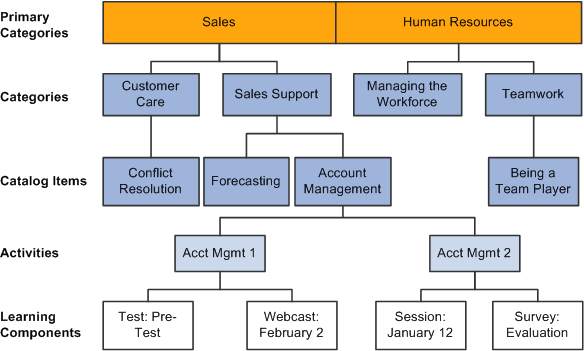Catalog Hierarchy
Image: Learning Catalog hierarchical structure
This diagram illustrates the hierarchical structure of the learning catalog.

Categories are the highest level in the hierarchy. They help classify content so that users can easily find classes of interest. You can nest categories as needed. Keep in mind that catalog maintenance can become more complex with each layer of categories that you add.
Each category can include multiple courses. Courses represent the specific topics of study that are available to learners—for example, Account Management.
Note: You can also group courses together to form curricula and certifications.
A specific instance of a course is a class. Classes represent the learning events in which learners enroll and comprise one or more learning components that define the learning content. The six basic learning component types are session, webcast, web-based, survey, test, and assignment. For example, you might create two different classes for the Account Management course. The first class could be strictly session based, while the second class could be blended, consisting of a pre-test, webcast, web-based article, and a post-test. When browsing or searching the catalog, learners can see both offerings and choose the one that best suits their needs.